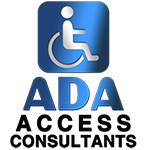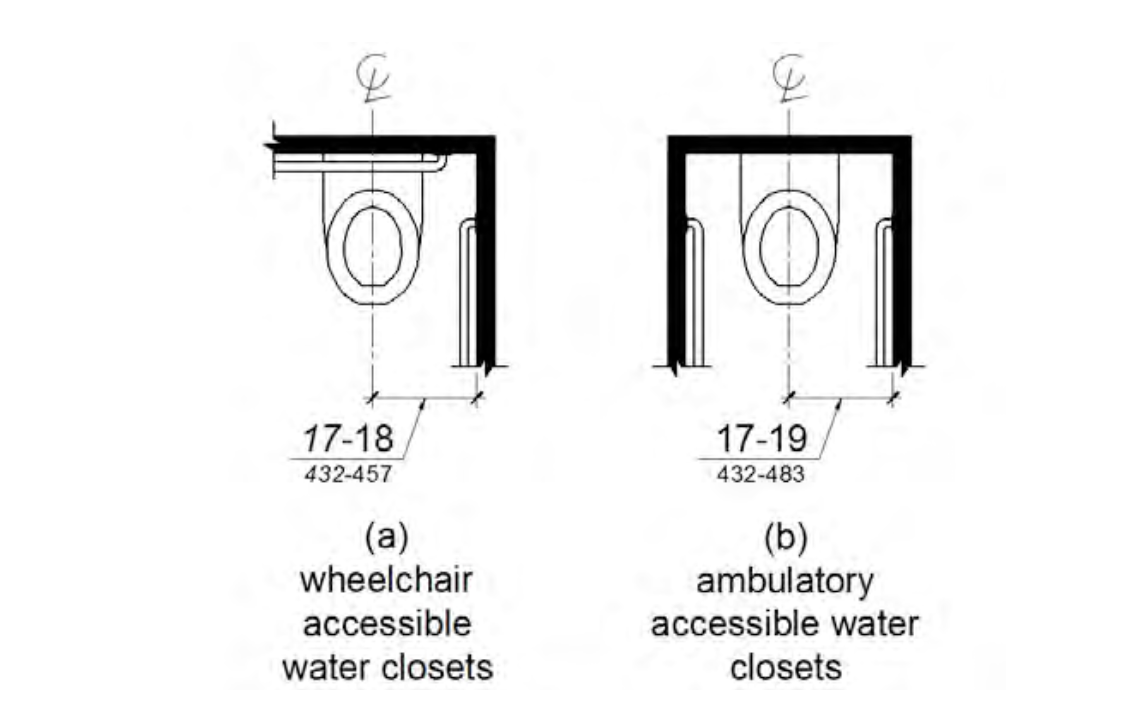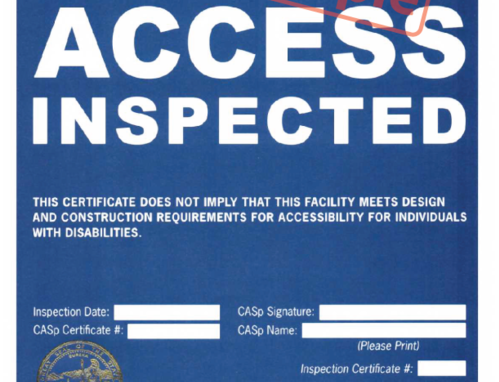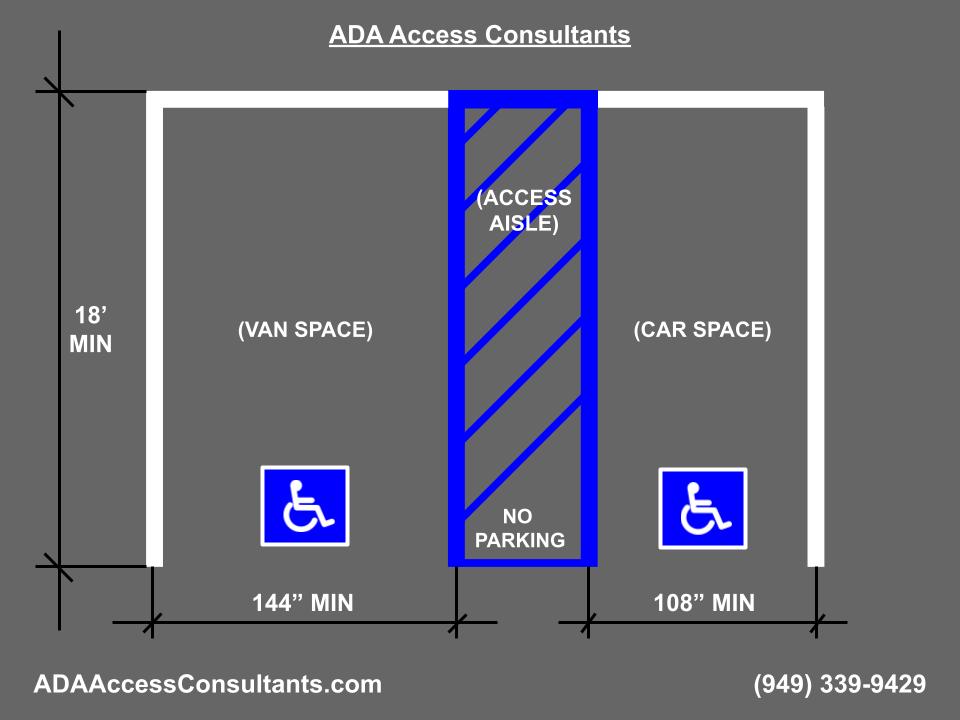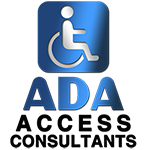ADA Kitchen Requirements ADA kitchens and Kitchenettes (804 ADA) Understanding ADA kitchen requirements is important in providing an accessible kitchen… <a class="continue" …
ADA Mat Guide (Truncated Domes)
What is an ADA Mat?
ADA mats, also known as truncated dome mats, are a tactile paving system designed to provide sensory feedback to visually impaired individuals. They typically consist of raised domes arranged in a grid pattern, contrasting in color with the surrounding pavement.
The domes are standardized in height, diameter, and spacing to meet ADA guidelines, ensuring consistency and usability across different locations. Hiring an CASp Inspector helps ensure your ADA mats are ADA complaint.

Purpose of ADA Mat
Safety: ADA mats serve as warning indicators, alerting individuals with visual impairments of potential hazards such as street crossings or changes in elevation. As a result, these mats help users detect the boundary between pedestrian pathways and vehicular areas, reducing the risk of accidents.
Accessibility: The raised domes on ADA mats help with orientation and mobility for individuals who use aids such as canes or wheelchairs. By feeling the texture underfoot, users can discern the presence of a curb or transition, allowing for safe and confident navigation.
Compliance: ADA mats are necessary components for ADA compliance in public infrastructure projects. They are required by law in various jurisdictions and ensure that pedestrian pathways adhere to accessibility standards and accommodate individuals with disabilities.
Universal Design: While primarily intended for individuals with visual impairments, ADA mats benefit a wide range of users, including the elderly, people with cognitive disabilities, and parents with strollers. Their universal design approach fosters inclusivity and equity for everyone involved.
When Do I Need an ADA Mat? (Truncated Domes)
ADA mats are essential in ensuring accessibility and safety in public spaces. Having compliant ADA features helps in prevent costly fees and ADA lawsuits. Common locations include:
1. Pedestrian pathways that intersect with vehicular routes or encounter changes in elevation definitely need one.
2. Additionally, these mats are crucial at curb ramps, marking the transition between the sidewalk and the street while providing tactile cues and visual contrast to alert individuals with visual impairments of potential hazards.
3. Also, ADA mats play a vital role at crosswalks, delineating pedestrian walkways from vehicular lanes, thus aiding visually impaired pedestrians in navigating intersections safely.
4.Along with those locations, transit platforms also require ADA mats to mark boarding areas and warn passengers of platform edges, facilitating safe navigation for individuals with visual impairments or mobility challenges.
Overall, ADA mats serve as indispensable tools in enhancing accessibility and promoting inclusivity in the built environment. ADA Access Consultants can help you work towards ADA compliance.
ADA Mat Requirements
705 ADA Mats (Detectable Warnings)
705.1.1 Dome Size. Truncated domes in a detectable warning surface shall have a base diameter of 0.9 inch (23 mm) minimum and 1.4 inches (36 mm) maximum, a top diameter of 50 percent of the base diameter minimum to 65 percent of the base diameter maximum, and a height of 0.2 inch (5.1 mm).
705.1.2 Dome Spacing. Truncated domes in a detectable warning surface shall have a center-to-center spacing of 1.6 inches (41 mm) minimum and 2.4 inches (61 mm) maximum, and a base-to-base spacing of 0.65 inch (17 mm) minimum, measured between the most adjacent domes on a square grid.
705.1.3 Contrast. Detectable warning surfaces shall contrast visually with adjacent walking surfaces either light-on-dark, or dark-on-light.
705.2 Platform Edges. Detectable warning surfaces at platform boarding edges shall be 24 inches (610 mm) wide and shall extend the full length of the public use areas of the platform.
If you are unsure that your ADA mats (Truncated Domes) are in compliance, reach out to our team of ADA/CASp inspectors for ADA consulting or ADA Plan Review.
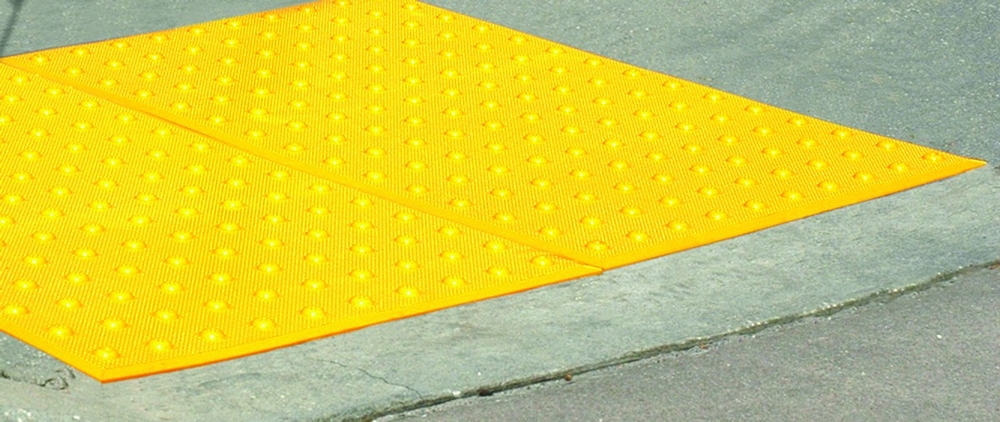
CASP INSPECTION OR ADA Consultation:
Blog:
ADA Bathroom Requirements allow for an accessible property to all. CASp inspectors at ADA Access Consultants help you get ADA compliant. Protect your self legally... Continue Reading ADA Bathroom Requirements
A CASp inspection is the inspection & reporting on a subject premise. This helps businesses work towards an accessible property. Continue Reading CASp Inspection
ADA compliance responsibility usually falls on both the owner and tenant legally. Often times lease agreements stipulate tenants pay for necessary improvements. Continue Reading ADA Compliance Responsibility
ADA parking is an important part of any accessible route. To be accessible, parking stalls require specific width, length, and slope. Continue Reading ADA Parking Guide
ADA sink height and width is an important metric when considering ADA access. Sink height is required to be 34 inches above finished floor. Continue Reading ADA Bathroom Sink Guide
Handicap Toilet Height If you’re curious about handicap toilet heights, we can help. The Americans with Disabilities Act (ADA) tells… <a class="continue" …
Hiring a CASp has many benefits. This includes ADA legal compliance, saved money, and a seamless construction process. In addition to this, there is a great social benefit to being ADA accessible. Continue Reading Benefits of Hiring a CASp – ADA Access Consultants
